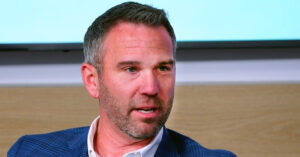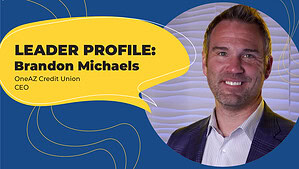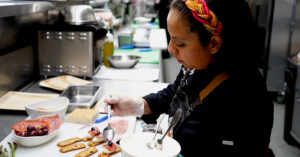If you missed it live, don’t miss the replay of the ninth episode of our Community Collaborative Series. In this episode, our leaders shake things up by directly challenging all community leaders and influencers to take specific action toward understanding bias. While we know biases exist, often creating a roadblock to diversity and inclusion, we can’t move forward until we confront the biases living in our subconscious mind.
This episode explores not only how we can better understand bias, but also how to engage in mindfulness to better address and move beyond bias. Follow along as the community leaders take us on a journey through understanding how important it is to approach the future with an open mind.
Community Collaborative co-host/producer and Black Chamber of Arizona CEO Robin Reed is back with co-host/producer and Arizona Hispanic Chamber of Commerce CEO Monica Villalobos to engage with our incredible community leaders. Not only do they lead the important discussion, but they challenge all community members to take action toward breaking down bias.
Joining the conversation are three incredible local leaders who are all dedicated to fostering inclusion in their own personal and professional lives. The lineup of guests includes Tim Overton, diversity and inclusion expert and appointed member of the Arizona Commission of African American Affairs, Ashley LaRae Sampson, entrepreneur and founder of Style PHX, and Bridget Pettis, founder of Project Roots AZ and former WNBA Player and Coach.
Throughout the episode, each leader shares their insights and inspiration to encourage more mindful considerations, conversations and actions when it comes to diversity and inclusion both in the workplace and the community.
Reed, Villalobos, Overton, Sampson and Pettis walk through what unconscious bias is, how it impacts our thoughts, and how mindfulness can work to confront bias both in and out of the workplace. To better make positive strides in the realm of diversity and inclusion, they explore imperative questions we should all consider:
- What does it mean to be mindful when it comes to biases ?
- How can we use mindfulness to get to a better place regarding diversity and inclusion?
Don't Miss These Highlights
Overton kicks off the conversation with a deeper look into what it means when it comes to understanding bias in the workplace. While acknowledging the need for diversity and inclusion is a step in the right direction, Overton examines how bias must first be understood to make real strides.
He references an eye-opening MIT and University of Chicago study, revealing an unfortunate truth: biases impact the workplace in numerous ways (2:38). It’s not just racial biases either. Everything from height to hair color has shown to have an impact on success and opportunity in the workplace.
When companies are looking to increase their diversity and inclusion, there tends to be questioning of the pipeline for diverse candidates. However, as Overton explains, “it may not be a pipeline problem. It may be how biases work in our brains and in society” (3:17).
He explains how the conscious and subconscious brain work at different speeds. The subconscious brain strives for efficiency by labeling things as “good” or “bad” while the conscious brain is still processing. This results in the immediate assumptions we make. In most cases, people don’t even realize what they are doing (4:38). Luckily, he points out, it is possible to adjust the way our brains register and respond to decisions (6:27).
Reed jumps in to add that while the statistics are powerful and important to acknowledge, it is imperative to develop “the action plans to create the outcomes that we’re looking for” (7:48). These action plans are what will help propel us toward a more diverse and inclusive workplace.
Sampson joins the conversation to emphasize the importance of identifying where our own biases lie. People don’t realize how much space the subconscious mind takes up in their daily lives. Therefore, it is imperative that leaders “figure out where these biases are coming from and learn how to actually stop them in their tracks” to make a difference for ourselves and others (8:35). “It will take all of us to move the needle,” Villalobos adds, encouraging heightened awareness of the presence of lack of diverse representation within a business (16:22).
Pettis comes in to share her roots with mindfulness, explaining her belief that “mindfulness is our nature,” and we are meant to be considerate of our surroundings including nature, animals, and other humans. “Mindfulness,” she says, “is the end of all the issues in the world and the beginning of a better life” (19:30).
She explores the importance of living in the present and choosing to make more mindful decisions in our daily lives, including at work. She emphasizes how it’s all about “choosing to open more” and be more considerate of the wide range of diversity we face in work and our communities (20:41).
Moving forward “is our choice,” she reiterates (21:38). Therefore, leaders should be ready to communicate their message and action plans with clarity to better foster understanding and build trust around plans to move forward. This will also help build community and connection (22:11).
Reed starts to wrap up the conversation by emphasizing how our opinions are shaped by our perspective and our experiences. When it comes to communication, people tend to express our opinion. However, Reed explains how making room for communicating our perspective and experiences paves the way for more understanding and, therefore, for diversity and inclusion to take root (25:38).
Actions We Can All Take
Important takeaways from Episode 9 include:
- – Be aware of biases that may subconsciously interfere with the pipeline of diverse candidates (2:38)
- – Understand how unconscious bias works (4:38)
- – Teach unconscious bias through interactive activities (5:43)
- – Use mindfulness or bias training to retrain your brain and change the way you make decisions (6:27)
- – Identify your own biases and tap into the subconscious mind to better understand where the biases are coming from (8:30)
- – Ensure your workforce is representative of your customer-base and your leadership team of your workforce (16:34)
- – Use mindfulness to be considerate of your environment, including the other people in it (19:30)
- – Choose to be open and considerate of diversity (20:40)
- – Communicate clearly to foster understanding and build trust as you address important issues (22:08)
- – Engage with the community to build relationships, inspire learning, and create opportunities (23:10)
- – Be aware of your opinions and how they come through in conversation (25:43)
- – Encourage younger generations to empower themselves with mindfulness (28:45)
This episode serves as yet another reminder that we still have a ways to go in terms of diversity and inclusion. However, it starts with a willingness to be mindful of our environment. It starts with confronting our biases and understanding where they come from. It starts with an open mind.
It is important not only to move forward with an open mind, but to encourage younger generations to do the same. By encouraging awareness and mindfulness in the minds of the future, we can work toward a future that celebrates diversity, welcomes inclusion and inspires positive change.
About The Community Collaborative
Community and business leaders and individuals who want to educate themselves on diversity issues will find the series informative and educational. And anyone who wishes to get involved will have ready access to resources featured in each program.
The video series may be streamed for free through the STN app. Viewers may subscribe through STN’s website or by downloading the STN app on the App Store or Google Play.
Each program in the series will provide details on how to get involved in featured activities and initiatives. To be featured in “The Community Collaborative” series or other STN programming, contact us at 480.967.7088.
Every day, there are leaders on the front lines of the fight to improve life in our community. STN provides the platform to tell their and their communities’ stories with video series on leadership philosophies and active efforts to make positive change in our region.





